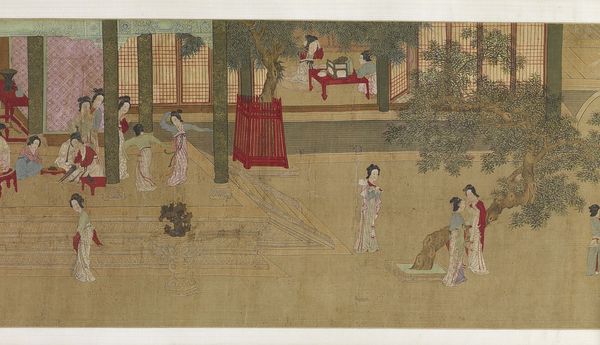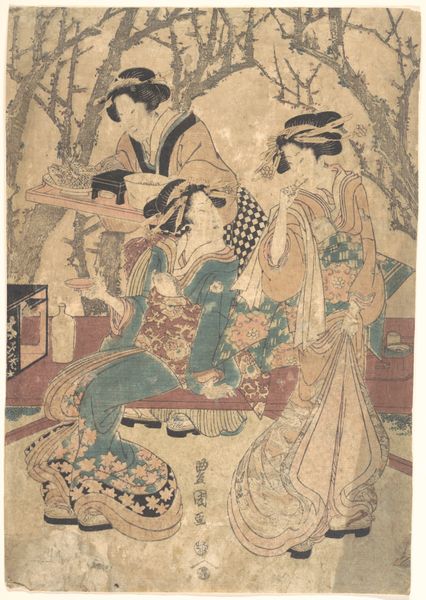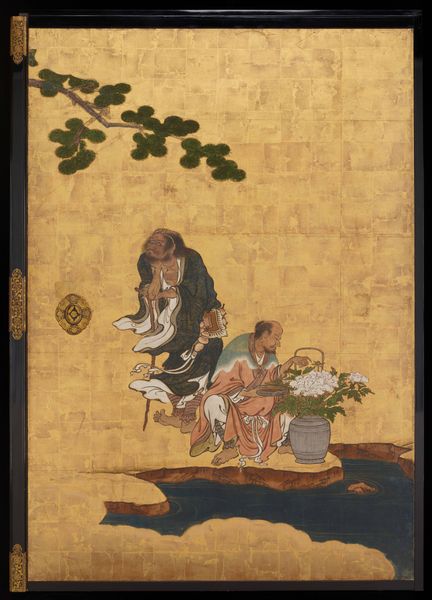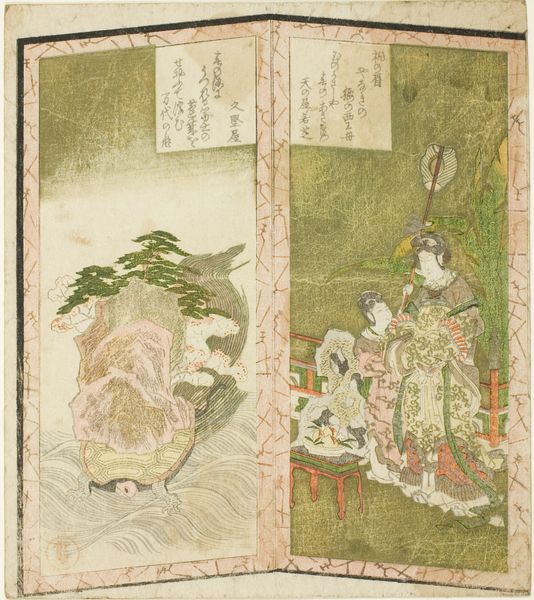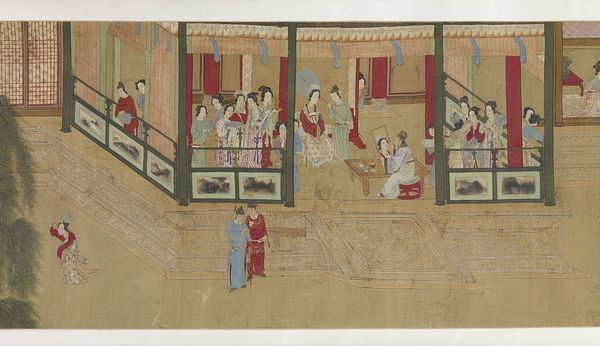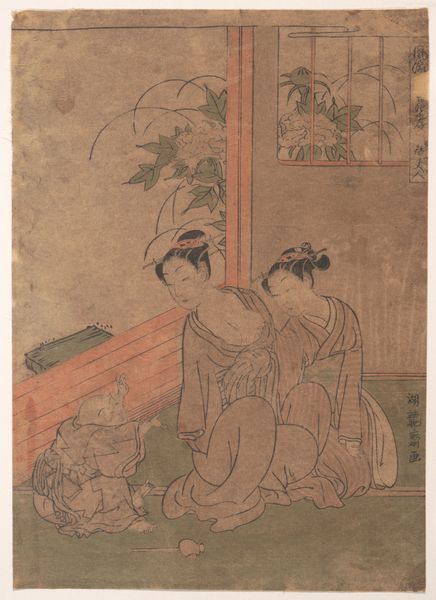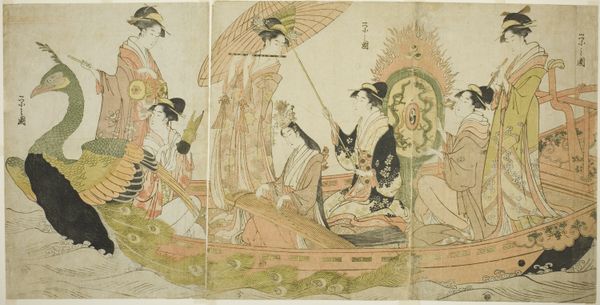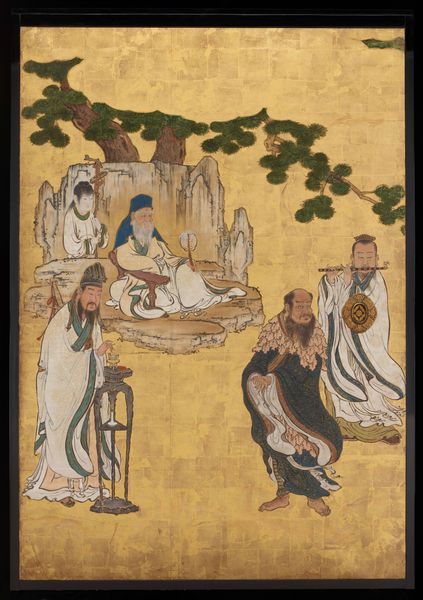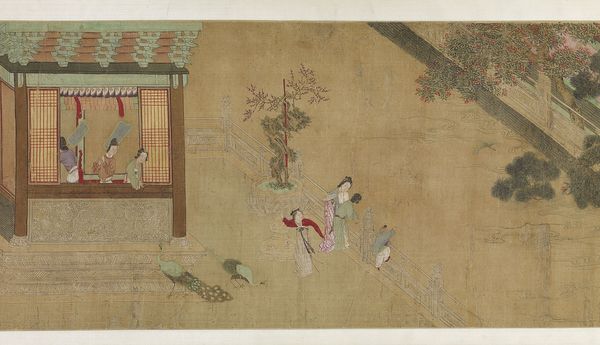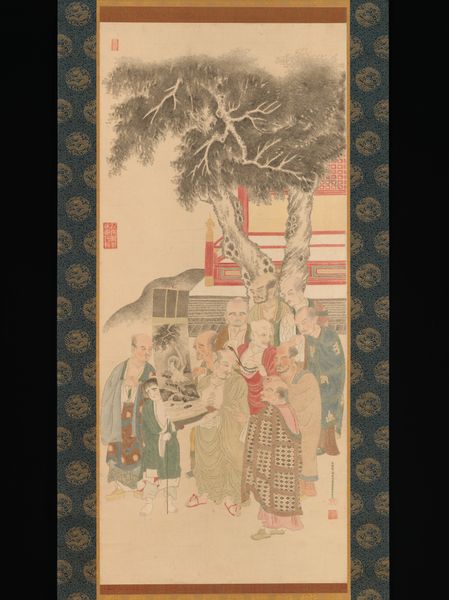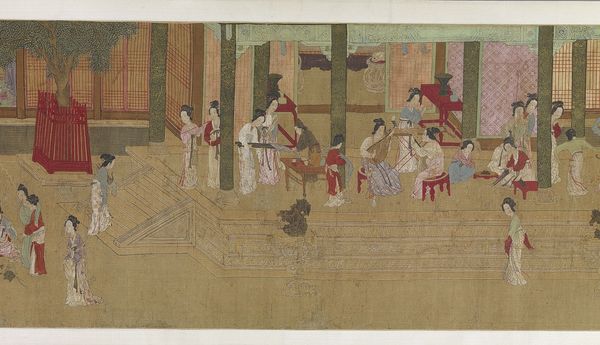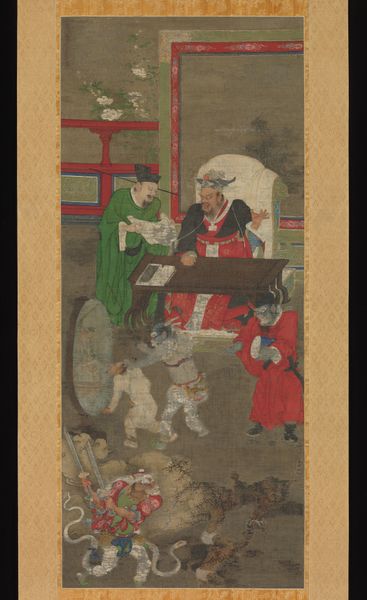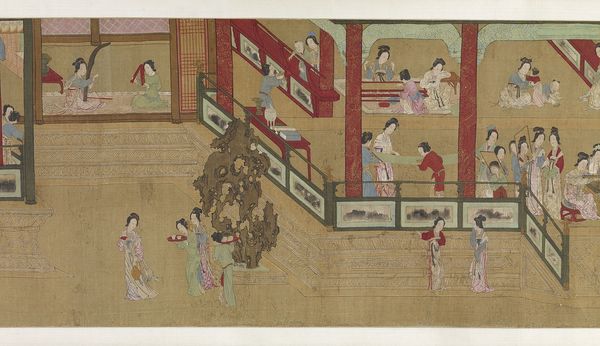
tempera, painting, ink
portrait
narrative-art
tempera
painting
asian-art
landscape
figuration
22_ming-dynasty-1368-1644
ink
genre-painting
history-painting
Dimensions: Image: 65 1/2 × 41 3/4 in. (166.4 × 106 cm) Overall with mounting: 9 ft. 8 in. × 50 in. (294.6 × 127 cm) Overall with knobs: 9 ft. 8 in. × 54 in. (294.6 × 137.2 cm)
Copyright: Public Domain
Editor: We’re looking at “Remonstrating with the Emperor” by Liu Jun, made sometime between 1475 and 1505 using ink and tempera. It’s a Ming Dynasty painting. The emperor appears to be holding court outdoors, but there’s one figure kneeling before him who looks incredibly upset. It has a dramatic quality that is immediately grabbing my attention! What’s your read on this piece? Curator: It's intriguing, isn't it? Given the historical context, "Remonstrating with the Emperor" visualizes the complex dynamic between imperial power and the scholar-officials. Consider how in the Ming Dynasty, these officials saw themselves as having a duty to morally guide the emperor, even if it meant risking imperial displeasure. Editor: So the painting documents, in a sense, a specific social tension? The emperor doesn't seem pleased. Curator: Precisely. The kneeling figure’s intense gesture is a performative act within a highly structured political environment. The setting itself - the outdoor court - could be a carefully chosen space for this exchange, emphasizing its public dimension and intended audience within the court. How does the landscape around the figures seem to you? Editor: Now that you mention it, the surrounding landscape almost serves as a stage, with the emperor at its center. Are the other figures in the scene meant to represent different factions within the court, observing the interaction? Curator: Exactly! They're positioned almost as witnesses, making it also about how political influence operates and potentially recording a specific moment of challenge to imperial authority. Did powerful patrons or factions in court commission this painting to subtly record historical arguments? Editor: That makes a lot of sense. It transforms how I saw it at first glance. Curator: Indeed, art is rarely separate from the socio-political contexts in which it is made and viewed. Reflecting on art through this lens highlights the intentions behind its creation and lasting influence. Editor: I’m struck by how much deeper this goes than just an emotional display. Thinking about who made this and for what reasons changes everything. Thank you!
Comments
No comments
Be the first to comment and join the conversation on the ultimate creative platform.

